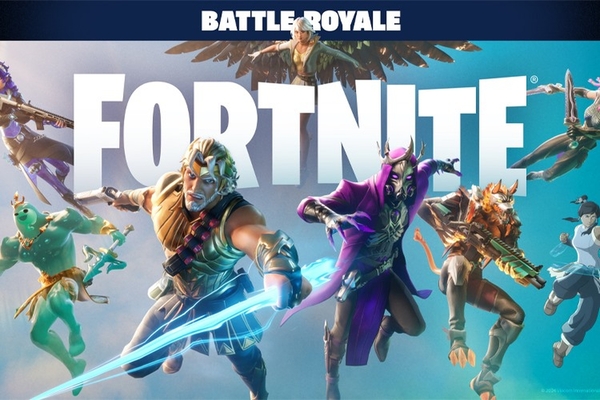Introduction
Fortnite, a game that began as a simple battle royale, has grown into a cultural phenomenon, drawing in millions of players worldwide. At its core, Fortnite is a free-to-play game, but its economic backbone is built on microtransactions. These microtransactions, mainly driven by cosmetic items like skins, emotes, and battle passes, are not just about generating revenue; they are intricately linked to player engagement, retention, and overall game experience. This article delves deeply into the economic ecosystem of Fortnite, focusing on microtransactions, how they influence player behavior, and the potential ethical concerns surrounding this model.
The Genesis of Microtransactions in Fortnite

Fortnite’s transition from a niche game to a global powerhouse was marked by the introduction of microtransactions. Initially, Epic Games launched Fortnite as a paid early access title with a PvE (Player vs. Environment) mode called “Save the World.” However, it wasn’t until the release of the free-to-play Battle Royale mode in September 2017 that the game skyrocketed in popularity. This mode, which pits 100 players against each other on a shrinking map, quickly became a cultural sensation.
The free-to-play model was a strategic decision, allowing Epic Games to attract a massive player base. However, to sustain the game’s development and servers, monetization was necessary. Thus, microtransactions were introduced, allowing players to purchase V-Bucks, the in-game currency, which could be used to buy cosmetic items. These items do not affect gameplay but have become a core part of the Fortnite experience, influencing player identity and social interaction within the game.
The Battle Pass: A Masterclass in Player Retention
The introduction of the Battle Pass system revolutionized how microtransactions work in Fortnite. For a fixed price, players can purchase a Battle Pass, which offers a series of rewards that can be unlocked by completing challenges and earning experience points (XP) throughout a season. The Battle Pass provides both a revenue stream for Epic Games and a tool for player retention.
Each season typically lasts around 10 weeks, and the Battle Pass is designed to keep players engaged throughout that period. The more time a player invests in the game, the more rewards they can unlock. This system taps into the psychology of completionism, where players feel compelled to complete the Battle Pass to obtain all the exclusive rewards. Moreover, the sense of urgency created by the limited-time nature of each season encourages players to log in regularly.
The Role of FOMO in the Battle Pass System
FOMO, or the Fear of Missing Out, is a significant psychological driver in the success of the Battle Pass. By offering exclusive rewards that are only available during a specific season, Fortnite creates a sense of scarcity. Players are motivated to purchase and complete the Battle Pass because they fear missing out on these items forever. This strategy not only drives initial sales of the Battle Pass but also keeps players engaged throughout the season.
Daily and Weekly Challenges: A Retention Strategy
To further enhance engagement, Fortnite introduces daily and weekly challenges that are tied to the Battle Pass. These challenges incentivize players to log in frequently and spend more time in the game to complete them. The challenges range from simple tasks to more complex objectives that require strategic gameplay, encouraging players to explore different aspects of the game.
The Ethics of Microtransactions: Is Fortnite Exploiting Its Players?
While microtransactions have proven to be a successful business model for Fortnite, they have also sparked significant controversy. Critics argue that Fortnite’s monetization strategy, particularly its use of the Battle Pass and other cosmetic items, can be exploitative, especially towards younger players. The game’s target audience includes a large number of children and teenagers, who may not fully understand the implications of spending money on virtual items.
One of the primary concerns is the use of psychological tactics to encourage spending. The FOMO associated with limited-time items, the gamification of the Battle Pass, and the social pressure to own certain skins or emotes can lead to impulsive spending. Some players may feel compelled to spend money to fit in with their peers or to avoid feeling left out, even if they cannot afford it.
Loot Boxes and Gambling Allegations
Although Fortnite does not directly use loot boxes, a controversial monetization tactic in which players purchase a randomized item, it still faces criticism for similar practices. The randomness associated with obtaining certain items through special events or promotional offers can create a gambling-like experience, especially for younger players. This has led to debates about whether Fortnite’s microtransactions should be more tightly regulated to protect vulnerable players.
Parental Controls and Epic Games’ Response
In response to these concerns, Epic Games has implemented various parental control features, allowing parents to set spending limits or disable in-game purchases entirely. However, the effectiveness of these measures is still up for debate, as the game’s design inherently encourages spending. The balance between monetization and ethical responsibility remains a contentious issue within the gaming industry.
The Social Currency of Skins and Emotes

In Fortnite, cosmetic items like skins and emotes have become a form of social currency. Players often use these items to express their individuality, showcase their achievements, or simply fit in with the latest trends. This social aspect of cosmetic items adds another layer to the game’s microtransaction system, as players are motivated to purchase these items not just for themselves but also to gain social approval from their peers.
The introduction of crossover skins, featuring characters from popular franchises like Marvel, Star Wars, and DC Comics, has only amplified this trend. These skins are often released as part of limited-time events, further driving the sense of FOMO and encouraging players to spend money to obtain them.